An internet of many autonomous communities
Making communities a true part of the protocol will encourage others to build things for those communities, start new communities, and hopefully foster models for self-sustainability.
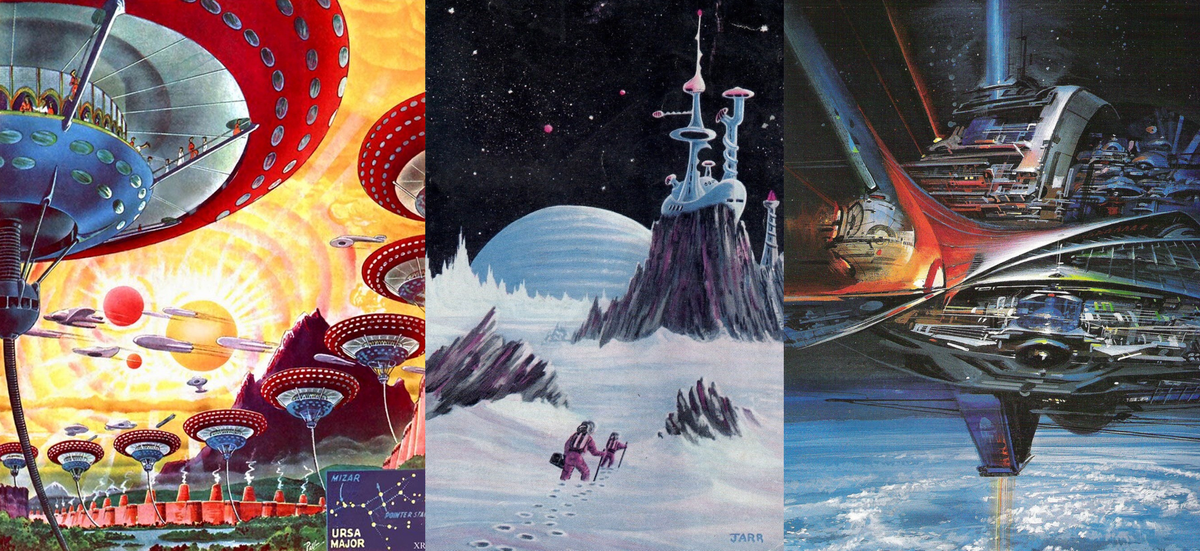
It’s no surprise, then, that self-described anarchists, mutual aid devotees, and open source advocates could be found among the ATProto conference’s attendees.
- Sarah Perez (TechCrunch, A world without Caesars: How the ATProto community is rebuilding the web to return power to the people, 2025)
Time is something I’m in short supply of, and blogging has started to feel like a luxury alongside hiring, PR reviews, and moderation escalations. But I keep thinking back to Atmosphere Conf 2025 (the first of many, I hope) and getting excited all over again about some of the conversations I had during my handful of days in rainy Seattle.
Besides how refreshing it was to attend a non-Jacob Javits Center tech conference, the biggest thing that excited me both before and after my talk was discussions with the Bluesky team (Bryan Newbold, Paul Frazee, and Jay Graber specifically and individually) about what could be first class support for communities as a protocol or at least app-level primitive!

ICYMI
Beyond Horseless Carriages: Building Communities for the Decentralized Era, Rudy Fraser
If you didn't catch my talk live, or want to revisit my acute allergic reaction (don't believe the rumors that I cried), you can watch below:
Beyond Horseless Carriages: Building Communities for the Decentralized Era, Rudy Fraser
The crux of the talk can be summarized in 3 points:
- Horseless Carriages: The first automobile was literally a horse-drawn carriage sans horse, but with an engine. This design likely had some benefits in being familiar (skeuomorphic) but lacking features that would be obvious today. That's the current state of apps in the ATmosphere. They're new products seeking to unseat incumbents and they carry all of the business and product upsides of the new tech but still look and feel like their predecessors.
- Path to a Zillion: The Fediverse (by this I mean Mastodon and its ilk) seem predominantly concerned with 50-100 person communities (as evidenced by per-instance registered user counts) while Bluesky is paving the way to a first-of-its-kind, multi-billion person decentralized social network (as evidenced by user growth, VC investment, and READMEs that literally say so). While pundits and skeptics are concerned with "how if", I am concerned with "if then" (they wonder how will Bluesky continue to grow if there are incumbents while I plan for the successful outcome). If Mastodon is the local bar and Bluesky is half the global population, then where is the in-between? I frame this as the space for 00's internet forum/subreddit sized communities (1K-2M). This size has a different scale of challenges that I face daily as I manage Blacksky.
- A Call to Action: Build for your community. That's all that matters. That's all I've been doing at least.
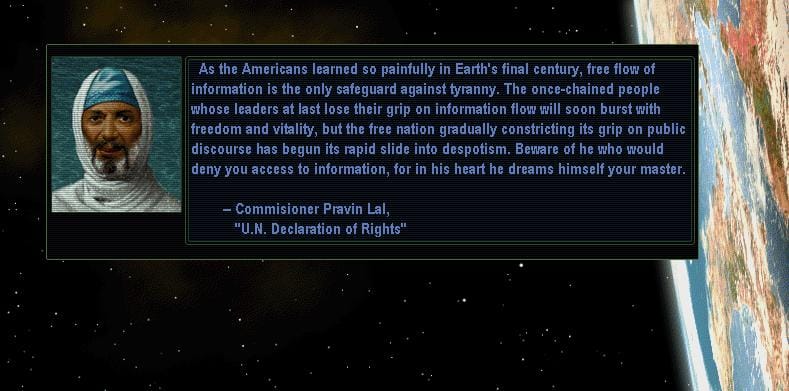
"Hive"
a highly aligned online community with a capacity for collective action
I've given my "Beyond Horseless Carriages" talk twice already (once at ATmosphere Conf, and again for the Institute for Rebooting Social Media) and what seems to stick with folks is my framing of how large, decentralized communities are underserved, not easy to build, but have implicit benefits such as still being reasonably human scale, context-aware, and grow organically.
More than once, a parallel to what I kept describing was compared to "Hives" in Ada Palmer's Terra Ignota series. If you're unfamiliar (as I was), here's a description of Hives from an article the author wrote (emphasis my own):
What if citizenship wasn’t something we’re born with, but something we choose when we grow up? In the Terra Ignota future, giant nations called “Hives” are equally distributed all around the world, so every house on a block, and even every person in a house, gets to choose which laws to live by, and which government represents that individual’s views the most. It’s an extension into the future of the many diasporas which already characterize our present, since increasingly easy transportation and communication mean that families, school friends, social groups, ethnic groups, language groups, and political parties are already more often spread over large areas than residing all together. In this future each of those groups can be part of one self-governing nation, with laws that fit their values, even while all living spread over the same space.
Readers of Too Like the Lightning have enjoyed playing the “Which Hive would you join?” game, but this system is very different from a Sorting Hat, or a personality quiz, for a simple reason: people aren’t assigned to Hives. In this world you choose, freely and for yourself when you come of age, which of the many worldwide nations best fits your ideals. And, even better, you can switch nations as easily as signing up for a different school club, so if a change in policy or rulers makes you feel your government no longer reflects your values, you can choose again.
- Ada Palmer (Reactor Mag, Writing a Future in Which You Choose Your Own Nation, 2017)
Sounds a lot like the opt-in/opt-out hashtags for Blacksky, the ability to choose your own moderator and algorithm (Blacksky, Blacksky Trending/Images/Videos, etc.), migrate PDS hosts, and soon other things perhaps?
A Brief Detour, Dear Reader
PTSD (notably, not my PDS) prevents me from finding comfort in crowds – my antennas go haywire and I sense false-positive signs of danger around every corner and in every gesture (yes, even in a crowd of fedora wearing computer nerds). So my constant refrain during the conference was that "I'm going to go hide". An inside joke with myself that I say to folks when I want to slip away and decompress. If I wasn't still navigating a public professional persona and out-of-state laws I'd've probably just lit up a couple times to calm my nerves. Instead, during one of several get-togethers at Big Time (the unofficial conference afters venue, unfortunate really) I lurked in a corner while the other hackers mingled.
And then Paul approached me. He'd asked if I had already spoken to Jay but we only had a couple brief exchanges (in crowds no less). He mentioned that Bluesky was interested in building something that looked sort of like what I was doing with Blacksky, an iteration on how feeds and labelers worked and making them work better together. It wouldn't be until my 3rd trip to Big Time though over another round of beers where I would hear about Terra Ignota and Hives and such.
Cliffs Notes for Balaji Srinivasan’s “Network State” 1. Start an online community 2. Crowdfund to buy land around the globe within existing nations 3. ???? 4. Nations ~peacefully~ cede land to internet community and recognizes its scattered plots of land as a sovereign country
— BlackskyRude1. (@rudyfraser.com) Mar 10, 2025 at 10:01 AM
[image or embed]
I've made both visual and literal nods to science-fiction so far. I'm actually one of those weird people that generally doesn't read fiction (never quite comes close to the rawness of reality or even the hyperreality of the internet nowadays for me). When I first heard about Hives it reminded me of Balaji Srinivasan's "Network State" which is a mostly laughable idea only because it completely sidesteps any kind of armed conflict which comes across as either naive or not understanding how The State works to enforce their borders and land, with violence.
For that reason I always take inspiration and learnings from groups like the Zapatistas or Rastafarians or local mutual aid orgs. I've even been on a crypto-anarchy kick lately (cryptography, dear reader, not cryptocurrency).
But enough side missions – what would I want to see in AT Protocol Communities?
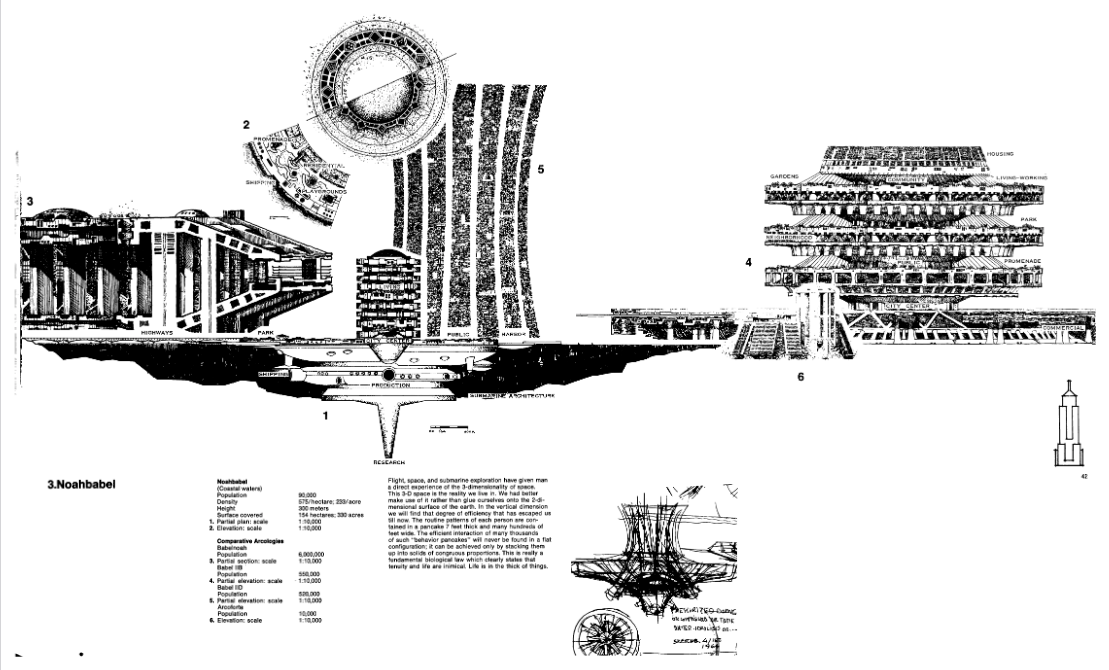
How can we build an internet of autonomous communities?
Hyperstructures Redux
Okay, one more side mission because I think it was a useful metaphor for self-sustainability in protocols and hate that it was given such a restrictive definition originally. During my web3 idealist era I came across an interesting article titled Hyperstructures which gets its name from a very problematic man named Paolo Soleri who coined the term "arcology", a portmanteau of architecture and ecology. The term "hyperstructure" makes an appearance in his book "Arcology: The City in the Image of Man":
Arcologies are architectural organisms of such character
and dimensions as to be ecologically relevant. They are
that architecture which is the "ecology” of reflective life.
In the genesis of neomatter (technology), in the face of
population growth, and because of the complexification
inherent in life development, it has become an immediate
necessity that the nodular nature of civilization, represented
by the “ city,” move toward the hyperdensity made
possible by a truly three-dimensional evolution— upward
for the living, downward for automated services and
production (in the seas the distinction will be less definitive):
The city (the part occupied by man), in-nested on
the automated instrument of production, using the large
surplus of energy yielded by production plants for a total
but open conditioning of soil, water, atmosphere.
In such a city, open to the environment, the ecology will
be determined by man. It will be an arcology, but it will
be an arcology only at the condition of being hyperstructural,
that is, being the “ form” of the compassionate
life developing within.
Structure is to biogenesis what form is to homogenesis.
As the destiny of man is in hyperfunctionality and hyperstructuralization,
the form thus sought is the aesthetic.
-Paolo Soleri (Arcology: The City in the Image of Man, 1973, p. 44)
It's a very attractive idea these hyperstructures – very solarpunk. They are pragmatic in addressing city sprawl (grow upwards for human expansion, downwards for industrial expansion), moral values come "batteries included" (designed to be communal and dependent on ecological survival), dynamically adaptive, proactive and self-sustaining – like both a living organism and an environment.
I say all of this to say that my number one request(s) when designing for communities and community-builders on AT Protocol is to:
- Treat "communities" as first class citizens (like "users" or "customers"). This is like how labelers are a special kind of account. Allow people to build things specifically for community account types.
- Trust that individuals will show up to shoulder the burden of forming and maintaining these communities (incl. but not limited to performing moderation responsibilities – some of us are weird like that). This means as new features are designed, you don't need to ask "but who will do that"? Probably me tbqh.
- At best provide a non-extractive/non-taxing monetization path (DID2DID payments?) and at least don't get in the way of communities forming reciprocal or gift economies.
Making communities a true part of the protocol will encourage others to build things for those communities, start new communities, and hopefully foster models for self-sustainability.
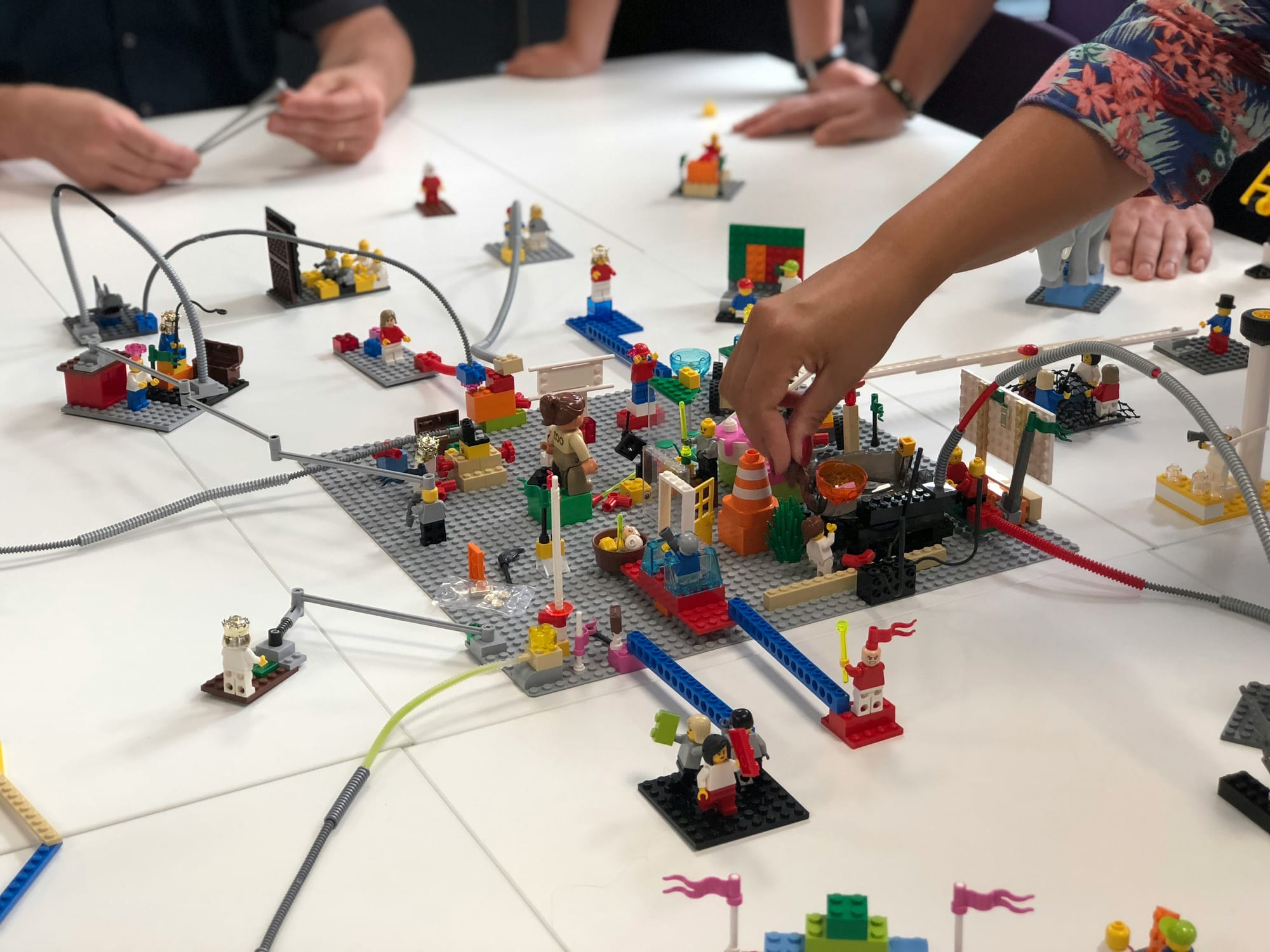
AT Protocol breaks apart traditional social media infrastructure into individual Lego bricks (downloadable app brick, authn + authz brick, CDN brick, backlinks/aggregator brick, etc.) and allows users, builders and developers to reconstruct those bricks into new experiences. I am asking here for new types of bricks.
1. The "switching cost" problem hasn't been demonstrably solved yet with any of the new apps (hopefully soon!) so I'm still holding on hope to Bluesky being an "AT Protocol Browser" more than the AT Protocol Microblogging site (third-party is first-party, etc.).
2. Bluesky PBC has been very clear that they are the ones with authority to define new kinds of Lego bricks. They are The Lego Group.
Delegated Moderation
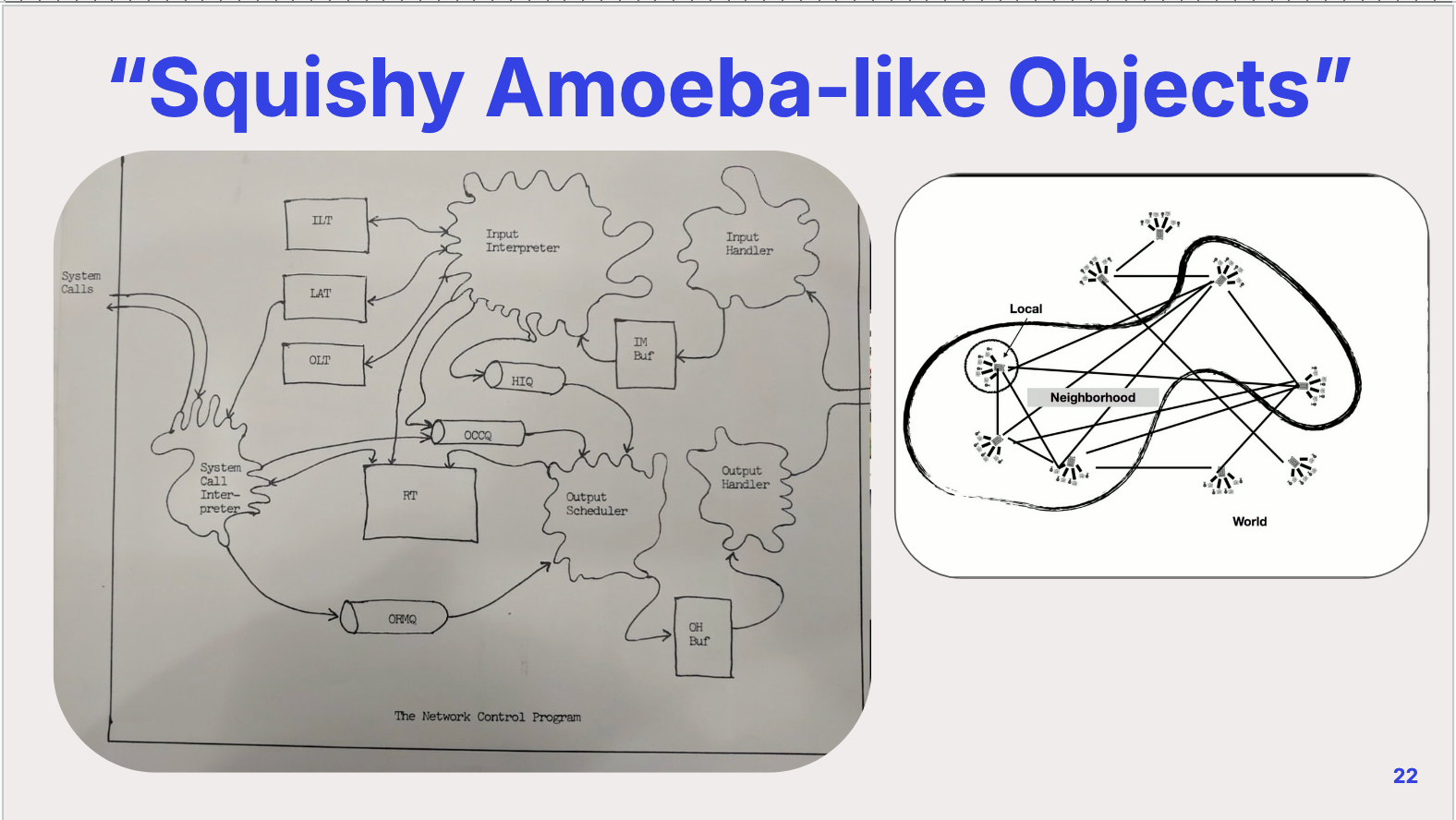
I've often described Blacksky as a "dotted lines" community (flexible, opt-in, and not fully walled‐off). It is a community that is loosely defined. There's a feed – but it's public so anyone can view it. You can include just a single post or have all your posts show up. Even then, it only aggregates posts and you're never exclusively posting to only the Blacksky feed.
If what exists today is a dotted line, I'd like something that provides the option and flexibility of a more shaded in border. If the excuse and commonly given raison d'etre of public centralized social media is to be a global town hall – if we're using metaphors for IRL speech and discussions in digital spaces – then I as a user should be free to use my inside-voice/whisper (private conversation), choose who I'm speaking to/with (audience control), and maybe even opt to have someone facilitate a conversation.
That last one is much more interesting to me as a building block.
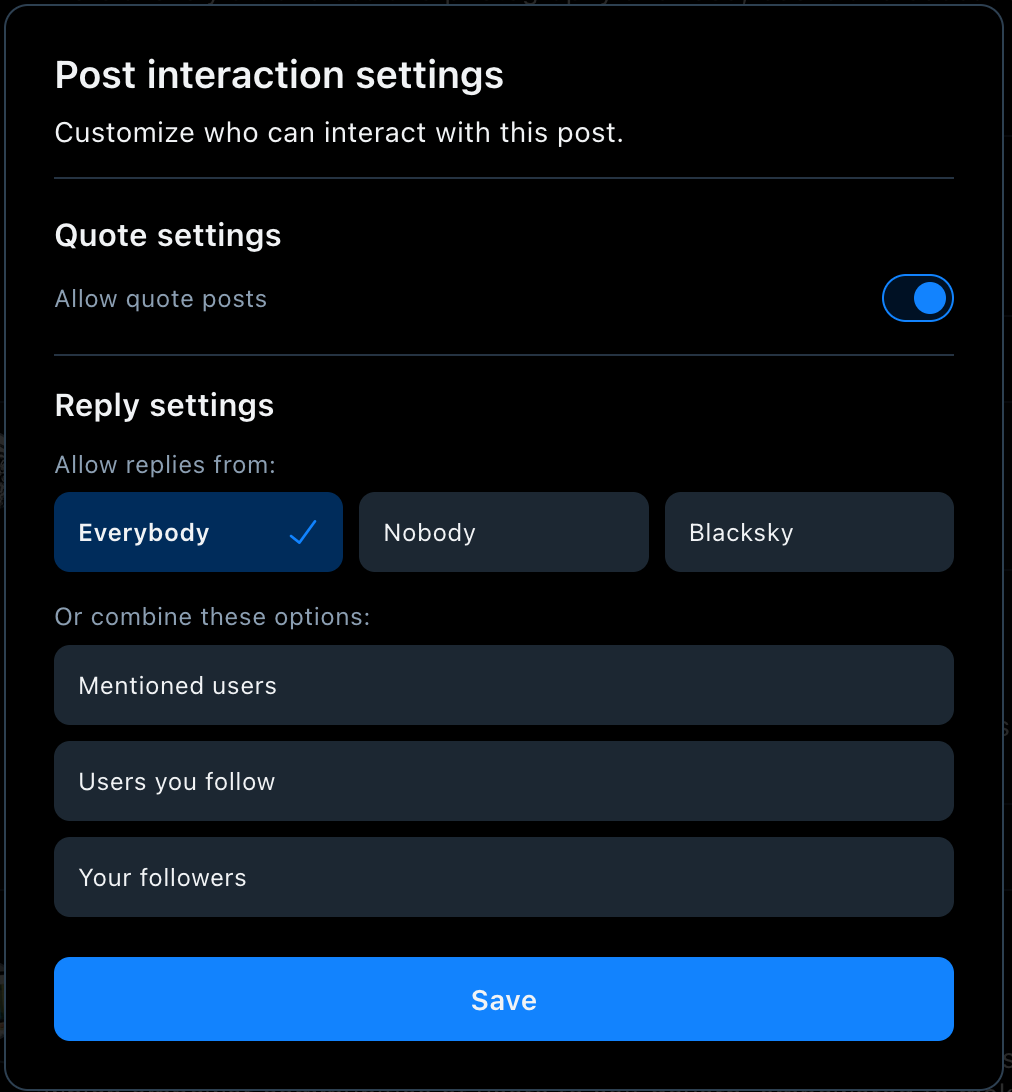
In this model, you could delegate to Blacksky controls for who can reply to a post and allow this service to apply labels that would be visible to anyone viewing the post. This is of course different from how moderation services work today where you only see labels if you subscribe to that service directly. This would expand the scope and effectiveness of labels making them more visible without necessarily giving them the power to "censor" speech by taking down records, etc.
Something like this could satisfy a request I've been getting for a more private space for Blacksky (not entirely and that's still the plan, but partially), generally create better audience control options (It's a public platform but I wasn't speaking to you which to me is similar to what I wear outside is "public" but commentary from just anyone isn't welcome), and still make affordances for new service types (maybe someone makes a really good "only people with 3 degrees of separation from me can interact" type algorithm).
Verification
Much ink has been spilled about Bluesky's impersonation problems. TechCrunch sums this up well:
"One reason for the confusion: Bluesky lacks a verified user badge like the one popularized on Twitter (now known as X, which itself replaced the old verification with a paid subscription). Instead, it relies on other signals, like verified domains in user handles, to signal the trustworthiness of an account — for example, you can tell someone is actually affiliated with Bluesky if their handle includes the “bsky.team” domain."
The problem with that is then you get into explaining DNS records to Flavor Flav which seems sub-optimal.
Some folks would have you believe that this problem can only be solved through centralization but I like reminding folks that billion user social networks is a new thing and stuff worked differently before (note: this is a bit before my time as well, but I be reading and what-not)
🔐 PGP Key Signing Parties: A Trust Network by Handshake
Before centralized authorities like Twitter handed out verified badges, cryptographers and privacy advocates used PGP key signing parties to build decentralized webs of trust.
- What it was: People would meet in person, check each other’s IDs, and then digitally sign each other’s PGP keys.
- Why it mattered: By signing a key, you vouch for the identity tied to it. Over time, this built up a web of trust where people could trust someone’s identity based on how many other trusted people had signed their key.
- Problems: It didn’t scale easily and was vulnerable to Sybil attacks if people weren’t careful about who they trusted. But it worked remarkably well in tight-knit or high-trust communities.
🌐 Webrings: Community-Based Affiliation on the Early Web
Long before social networks, webrings helped small websites build credibility and community.
- What it was: A decentralized network of sites that all linked to each other through a ring. You could “next” your way around sites in the same ring, all focused on a niche.
- Why it mattered: Being in a webring was a kind of soft verification — it showed affiliation with a certain group or aesthetic. It was user-curated, not platform-imposed.
- Problems: No security guarantees. But in practice, being vouched for by others in the ring gave sites a kind of credibility in their scene.
My main takeaway from the past is that in lieu of platforms, we relied on communities. So, why not both?
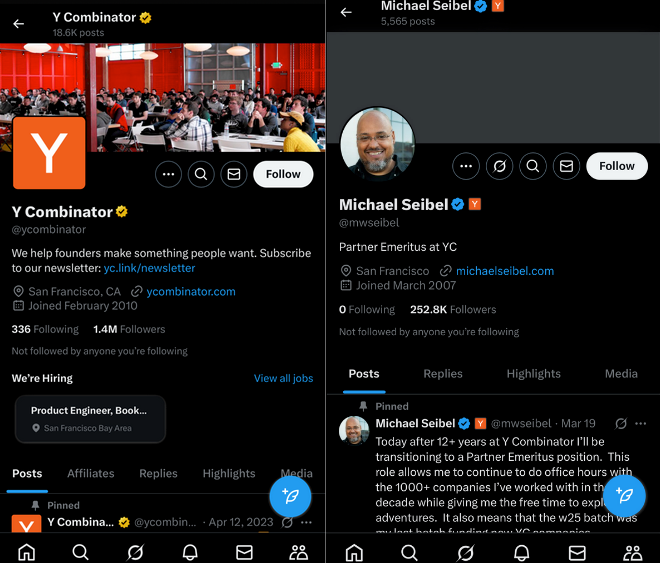
To get a bit more concrete, I dig X's "verified organization" and "affiliate" feature. In their model, organizations pay X thousands of dollars and receive additional profile customization options, a gold check, and the option for their affiliates to display their organization logo on profiles and in timelines.
Applying my all-time favorite Virgil Abloh's 3% rule, what if Bluesky had a concept of "verified communities"? Just as PDS and App-Views maintain the burden of platform moderation (professionalized trust & safety stuff like CSAM) and pass on community moderation to labelers and Ozone operators, perhaps there can be both platform verification alongside community verification. And similarly from a user perspective where the technical burden and moderation responsibilities can be delegated to a third-party, users can just be "affiliates" verified by their community instead of having to buy a domain to be verified.
This was a bulk of what I spoke about with Jay during our chat at the conference. She also mentioned giving users the option of which badges to display on their profile (which now reminds me of choosing your own nation in Terra Ignota). Maybe you show your Bluesky, Blacksky, and Northsky badge on your profile at once or maybe just one or two.
Badges & Reciprocity
"The revolution ain't free" is a thing I like to say. It will cost you coins, resources, labor, etc. What has absolutely floored me is people's willingness to contribute all-the-above and more for Blacksky's cause. From Linda creating the Umoya Fellowship to make sure folks from Blacksky could attend the first Atmosphere Conf (Clinton & Daniel), to Natalie designing SAFEskies from scratch (the first service to integrate specifically with Blacksky's rsky atproto implementation), to Annaya who created our first user facing docs, to the mods, to the devs, etc. etc.
Several folks who have contributed to Blacksky have emphatically turned down financial compensation. I can also imagine communities that have $0 budget but still want to reward contributors. And personally, I was one of those kids who was obsessed with their Xbox 360 gamerscore (points accumulated from in-game achievements) and am now an adult that really likes my little Github achievements.
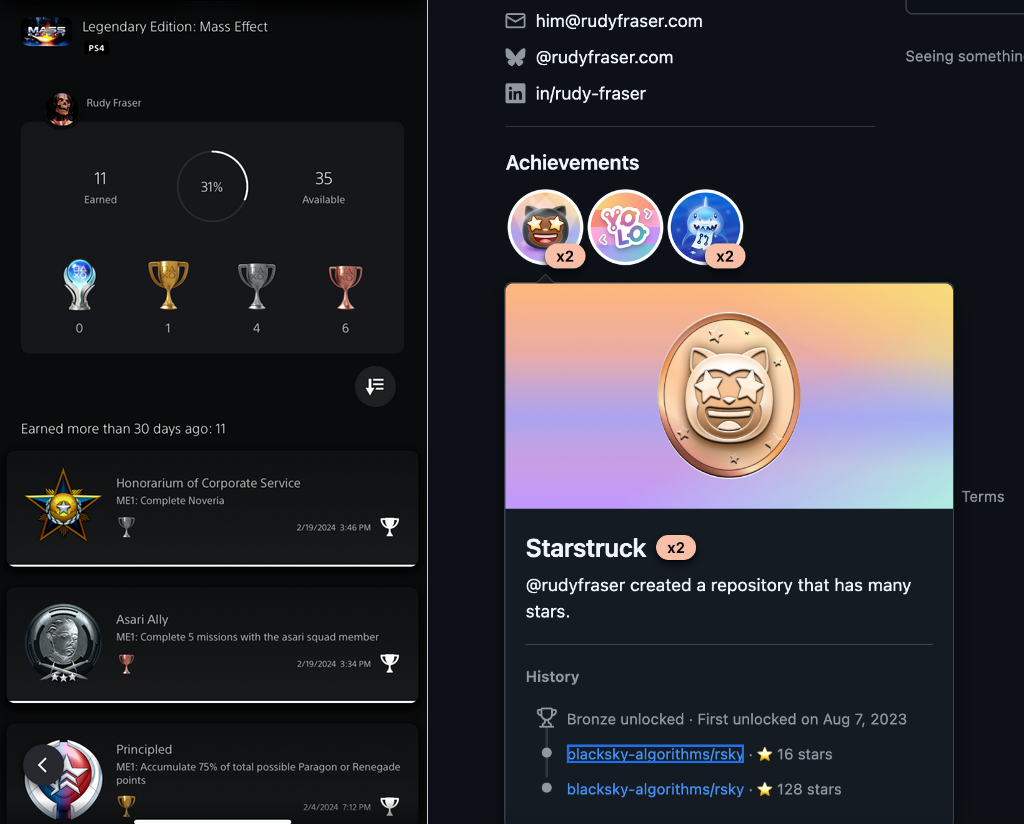
Eventually being able to have DID2DID payment rails directly supported by the protocol would be amazing (until then you can support Blacksky on Open Collective, we don't do ads but our own subscription post automatically pops into the Blacksky feed from time-to-time as our sole "sponsored post"). But even in addition to that it'd be cool to offer non-financial gifts. Maybe you get one for changing your pfp to include laser eyes during February. Maybe you get one for making a logo for Blacksky. Or for making a crochet Black butterfly. That kind of thing.
The Blacksky Editions. Thank you @mattie.thegem.city 🖤❤️🔥
— BlackskyRude1. (@rudyfraser.com) Mar 22, 2025 at 9:10 AM
[image or embed]
What's great is some of the tools and ideas exist and have been there for a while but lack in-app support. Nick Gerakines built https://badge.blue/ which does exactly this and even has some fancy signature mechanisms for verifying badges. The example for this is https://atproto.camp/ but wouldn't it be cool if badges could instead be displayed on a user's profile? Just like you own your posts and they go where your account goes, so too do you own your badges:
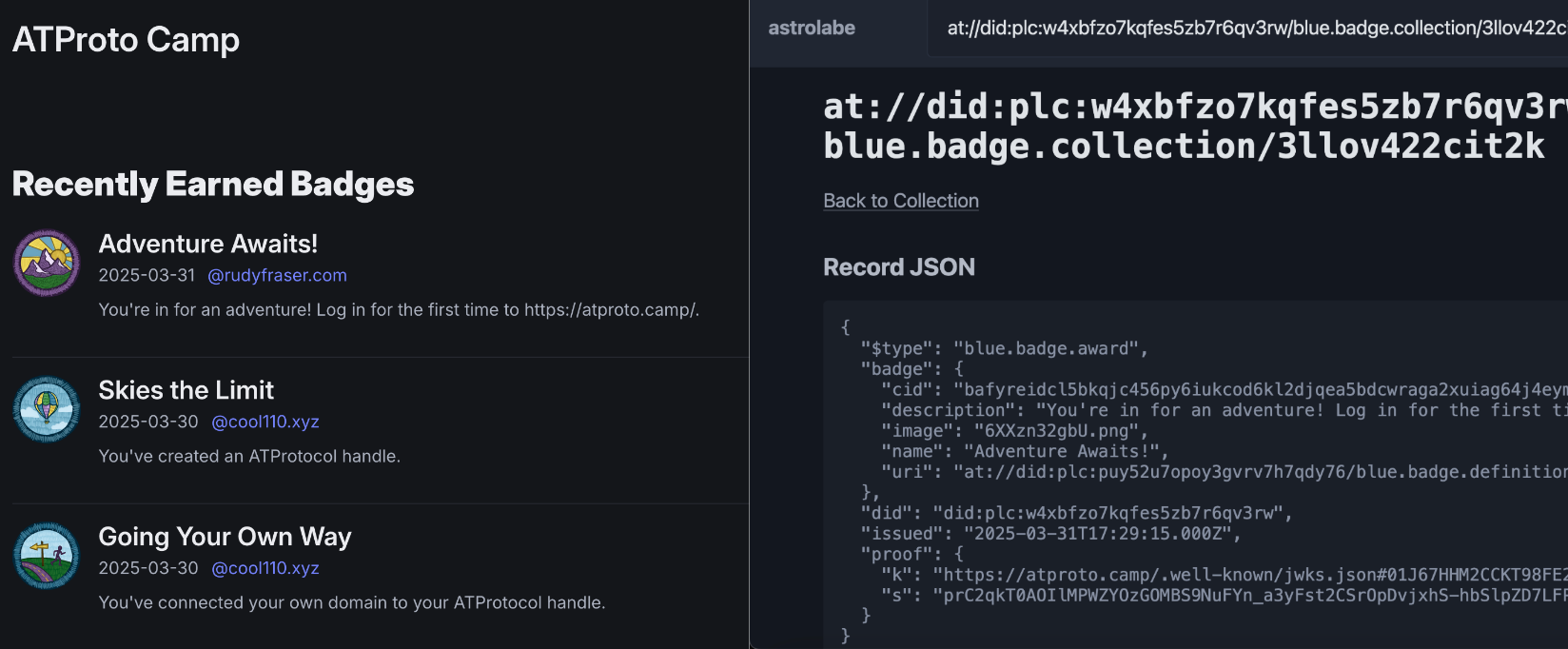
This also addresses the way folks have hacked on the labeler system to offer self-labels which themselves are a kind of badge but only visible to other people who opt into the same mod service. This reduces the likelihood others see your self-label and has the unfortunate side effect of cluttering your moderation options if the badge labeler hasn't updated their label definition.
In Conclusion
In my talk I mentioned how Bluesky works as a skeuomorphism of Twitter/X. A familiar design that makes mass adoption of an inherently new technology all the easier to get started with. But ultimately being a new and different technology, users at least intuitively understand the differences and how it solves a problem or makes their lives easier. In the example of a physical calculator and Calculator.app (the macOS desktop application), only one allows me to copy and paste the numbers I see in a webpage. Likewise, Bluesky and not X allows you to choose from a library of algorithms and moderation services instead of being stuck with one.
And therein lays something quite interesting: some folks use Bluesky for months, never taking advantage of features like custom feeds and moderation services resulting in them feeling like Bluesky "is just like Twitter". But I love telling the story about how Blacksky as a community doesn't generally hold this opinion, because Blacksky could not exist in the same way elsewhere both within but independent of a platform. An app within an app.

I don't want to overextend the metaphor but new Bluesky users are essentially Hiveless – governed by a global set of laws but not any community ones. Likely struggling to find community and genuine connections as well.
Some new building blocks and approaches could help new autonomous communities form and sustain themselves – offloading platform burdens, making for a more pleasant experience for users, and in time be easier and easier to create and maintain:
- Community accounts as first‐class citizens
- Delegated moderation
- Verification via communities
- Badges & reciprocity built in
Here's hoping folks find their Hive. If you're interested in building communities or services that aid particular communities on AT Protocol don't hesitate to reach out if I or Blacksky can be of any help (rudy@blacksky.app).
